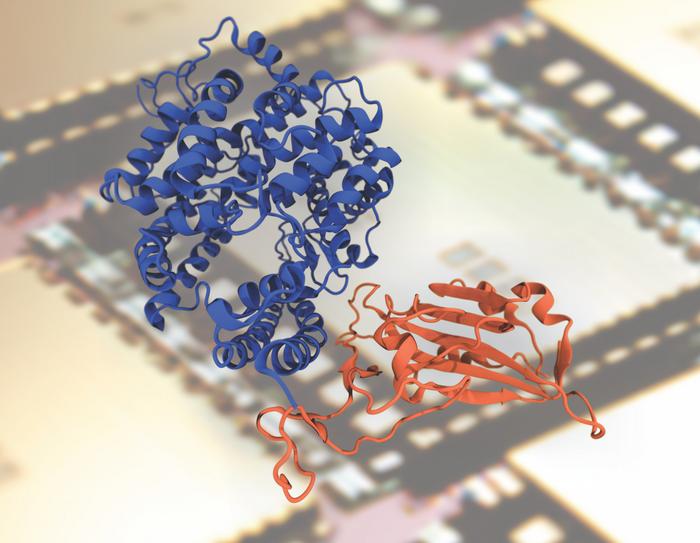In a recently published article featured on the cover of the Biophysical Journal, Dr. Rafael Bernardi, assistant professor of biophysics at the Department of Physics at Auburn University, and Dr. Marcelo Melo, a postdoctoral researcher in Dr. Bernardi’s group, shed light on the transformative capabilities of the next generation of supercomputers in reshaping the landscape of biophysics.

Credit: Rafael C. Bernardi
In a recently published article featured on the cover of the Biophysical Journal, Dr. Rafael Bernardi, assistant professor of biophysics at the Department of Physics at Auburn University, and Dr. Marcelo Melo, a postdoctoral researcher in Dr. Bernardi’s group, shed light on the transformative capabilities of the next generation of supercomputers in reshaping the landscape of biophysics.
The researchers at Auburn delve into the harmonious fusion of computational modeling and experimental biophysics, providing a perspective for a future in which discoveries are made with unparalleled precision. Rather than being mere observers, today’s biophysicists, with the aid of advanced high-performance computing (HPC), are now trailblazers who can challenge longstanding biological assumptions, illuminate intricate details, and even create new proteins or design novel molecular circuits.
One of the most important aspects discussed on their perspective article is the new ability of computational biophysicists to simulate complex biological processes that range from subatomic process to whole-cell models, with extraordinary detail. As Dr. Bernardi articulates, “The new exascale computers allow computational biophysicists to go beyond what can done experimentally and simulate biological processes with a much higher level of detail. For instance, we can now understand how pathogenic bacteria bind to humans during infection at an atomistic level, generating data for AI models and opening new roads of exploration.”
Historically, fields such as physics and chemistry have relied heavily on theoretical models to guide experiments. Today, biology stands at a similar crossroads, with novel software and specialized hardware becoming pivotal in deciphering experimental data and proposing innovative models. The inaugural public exascale supercomputer, Frontier, which was deployed by the Oak Ridge National Laboratory in late 2021, coupled with the rapid proliferation of artificial intelligence tools tailored for biophysics, exemplifies the profound strides being made to seamlessly bridge simulation with actual observation.
The momentum gained by computational biophysics signifies a monumental shift. As biophysical research progresses, the seamless integration of experimental and computational efforts is expected to redefine the frontiers of knowledge, laying the groundwork for unprecedented discoveries that could reshape our understanding of the biological world.
——–
For further details about the article please reach out to [email protected]. The perspective, titled “Fostering discoveries in the era of exascale computing: How the next generation of supercomputers empowers computational and experimental biophysics alike,” is distinguished as a cover article in the July 25 edition of Biophysical Journal.
Journal
Biophysical Journal
DOI
10.1016/j.bpj.2023.01.042
Method of Research
Computational simulation/modeling
Article Title
Fostering discoveries in the era of exascale computing: How the next generation of supercomputers empowers computational and experimental biophysics alike
Article Publication Date
25-Jul-2023



